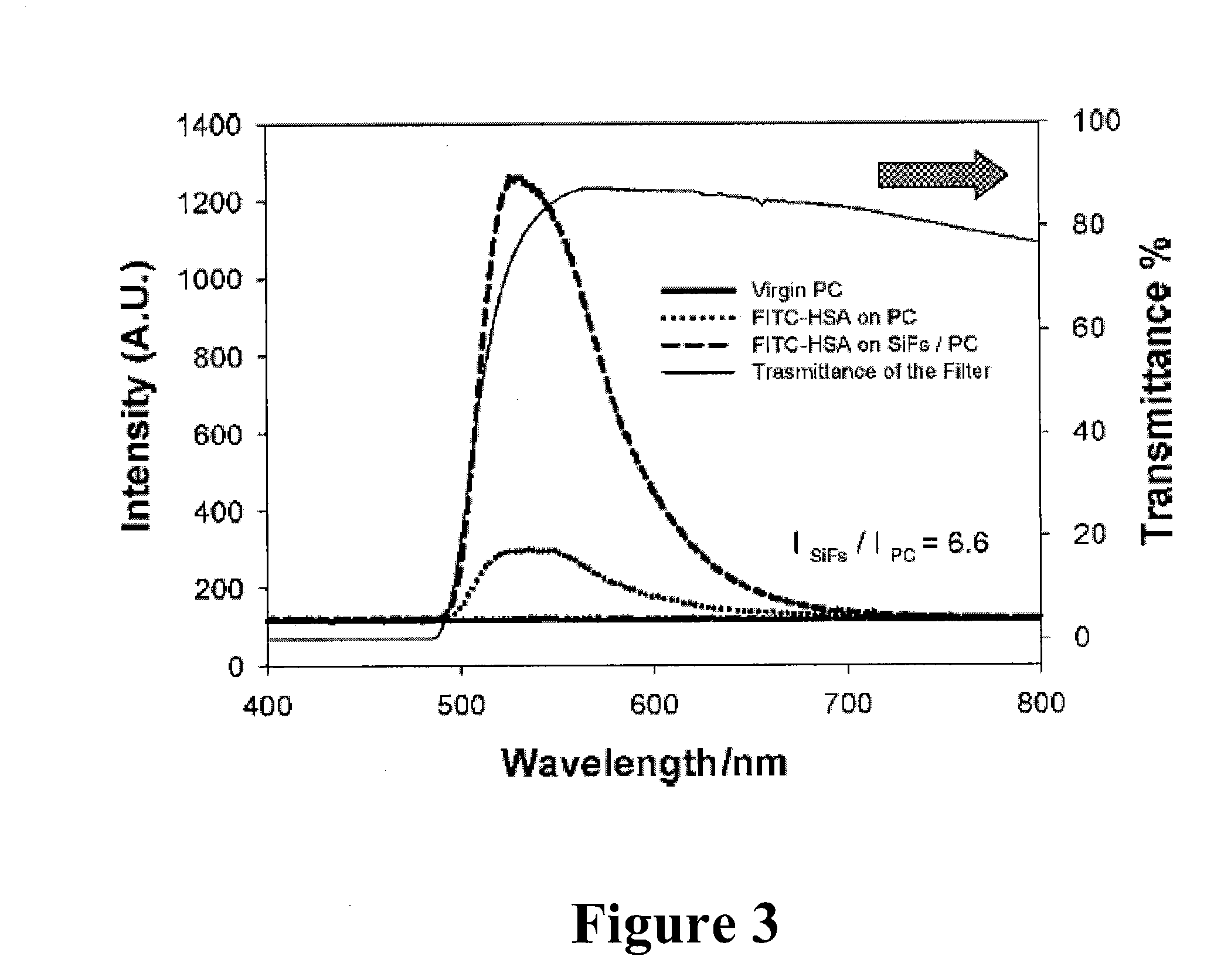Metal-Enhanced Fluorescence from Plastic Substrates
- Summary
- Abstract
- Description
- Claims
- Application Information
AI Technical Summary
Benefits of technology
Problems solved by technology
Method used
Image
Examples
examples
[0089]A polycarbonate film (PC) was modified using chemical modification for silver deposition and therefore metal-enhanced fluorescence. Base catalyzed hydrolysis of the PC film readily created additional surface functionality for silver island film deposition. Polycarbonate was chosen as the polymer of interest due to its widespread use in biotechnology [6, 12, 13].
[0090]Metal-enhanced fluorescence is known to be a through space phenomenon, where the close proximity of fluorophores to silver nanostructures results in quenching of the emission [1, 2, 5]. The fluorophore was positioned about 4 nm from the metallic surface using a labeled protein, namely FITC-HSA. The disclosed results clearly show that plastics can indeed be modified for silver deposition and notable enhancements in fluorescence emission can be achieved from the plastic substrates, similar to that observed from glass [5].
[0091]Materials and Methods
[0092]Polycarbonate (PC) films with 50 pm thickness were cut into 75×...
PUM
| Property | Measurement | Unit |
|---|---|---|
| Temperature | aaaaa | aaaaa |
| Temperature | aaaaa | aaaaa |
| Time | aaaaa | aaaaa |
Abstract
Description
Claims
Application Information
 Login to View More
Login to View More - R&D
- Intellectual Property
- Life Sciences
- Materials
- Tech Scout
- Unparalleled Data Quality
- Higher Quality Content
- 60% Fewer Hallucinations
Browse by: Latest US Patents, China's latest patents, Technical Efficacy Thesaurus, Application Domain, Technology Topic, Popular Technical Reports.
© 2025 PatSnap. All rights reserved.Legal|Privacy policy|Modern Slavery Act Transparency Statement|Sitemap|About US| Contact US: help@patsnap.com



